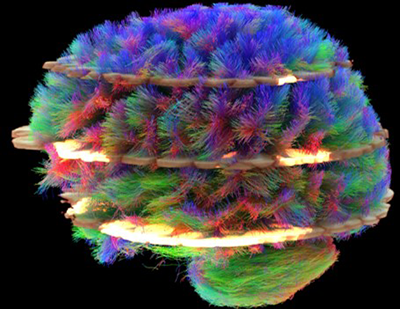A new partnership between Schulich Medicine & Dentistry, London’s academic teaching hospitals and medical technology pioneer Siemens Healthineers is continuing to build on the region’s established excellence in medical imaging, improving patient care, research and teaching. It came on the heels of a multi-million dollar partnership with Canon Medical Systems Canada.
“There is no way that you can get to where you want to without the collaboration of multiple people,” said Dr. Narinder Paul, Chair/Chief of the Department of Medical Imaging. “Key to advancement is having joint values and a common focus on what you want to achieve, and we’ve got that with these partnerships.”
The Siemens partnership in magnetic resonance imaging (MRI), interventional angiography, cardiology and cardiac surgery established a centre of excellence in advanced diagnostic imaging and therapeutics.
It includes the creation of an education, training and scientific research support fund. Siemens provided more than $1 million in support funding for research, advanced clinical applications, teaching and outcomes analysis.
The research fund will support collaborations between teams in diagnostic and interventional radiology, cardiology, and cardiac surgery, with imaging scientists at Lawson Health Research Institute and Western’s Robarts Research Institute, as well as teams from across the University.
“Not only will we become leaders in state-of-the-art imaging and intervention through the centre of excellence, but thanks to the research contribution from Siemens Healthineers, we have dedicated funds for critical research in cardiovascular and neurological diseases that will translate to improved services and outcomes for patients in London and the region,” said Dr. Paul.
The centre of excellence also provides hands-on training in MRI, diagnostic, and interventional catheter procedures through development of advanced simulation and phantom models and is open to medical learners and clinicians from across Canada to use to improve their skills.
As well, London Health Sciences Centre and St. Joseph’s Health Care London acquired six clinical MRI systems and six angiogram suites to be used for patient care, including the introduction of the first 3T MRI in the region.
“Collectively, Western and our partner institutions in London are a global powerhouse, recognized for our expertise and facilities in imaging that drives discovery and innovation across a broad range of disciplines,” said Alan Shepard, President & Vice-Chancellor of Western University. “This partnership with Siemens Healthineers builds on our strengths, increases capacity to enhance patient care, and expands opportunities to integrate education, training and research for the benefit of learners and faculty. It’s a huge win for London and Southwestern Ontario.”
The Siemens Healthineers collaboration builds on another medical imaging partnership that was established earlier in the year.
 Last year, a multi-million dollar partnership between Western University, London’s hospitals and Canon Medical Systems Canada in computed tomography (CT) was forged.
Last year, a multi-million dollar partnership between Western University, London’s hospitals and Canon Medical Systems Canada in computed tomography (CT) was forged.
That partnership saw the investment of a $4.5 million dedicated research CT system, an angio suite and a portable ultrasound machine to be used for medical imaging research. As part of the collaboration, London is now home to Canon Medical’s largest installation of CT platforms in the world.
Additionally, London’s hospitals acquired six clinical CTs dedicated to patient care, standardizing the equipment across the city’s hospitals.
The collaboration enhances the quality of care available to patients in Southwestern Ontario. The advanced technology offers lower radiation doses with each scan and produces higher resolution images, which allows for more precise diagnosis.
With a dedicated CT suite for research at Robarts, scientists are able to take innovative approaches to advancing the technology and to tackling novel studies.
“We’re trying to address the gaps in unmet patient needs through innovations with our research scientists, engineers and physicists,” explained Dr. Paul. “Another important aspect is to take those learnings and translate them into the clinical space.”
By mirroring the equipment used for research with that found in clinical settings, scientists can more quickly and readily apply their research findings to patient care. Canon Medical has also contributed a CT Physicist and a Clinical Applications Specialist to work on-site at Robarts to further support research.
“Having the same platform means that when we develop innovations and discoveries on the research scanner, as soon as they are validated, we can translate them immediately into the clinical space for patient benefit,” said Dr. Paul.
Combined, both the Siemens and Canon partnerships mark major milestones in Western’s more than 40 years of Canadian leadership in biomedical imaging, where an unmatched combination of scientists, research programs and hospitals combine to offer the perfect location to advance the future of health care.
“With these partnerships, I think we can make the system a lot more efficient, and we can push relevant innovations faster,” said Dr. Paul. “You really need to be able to work in collaboration to make a real difference.”